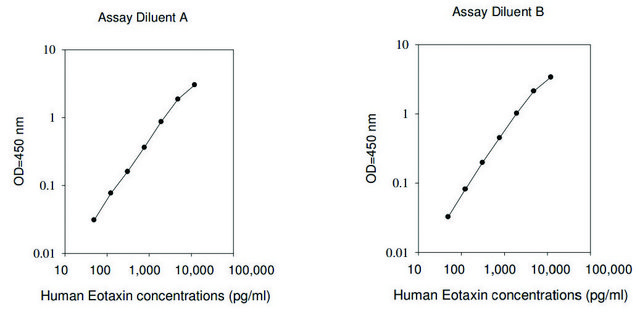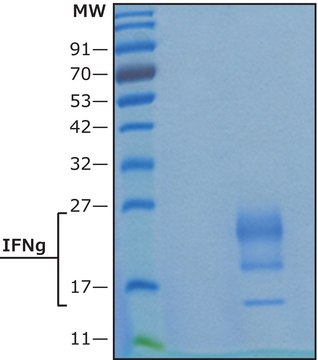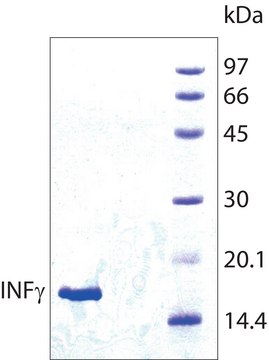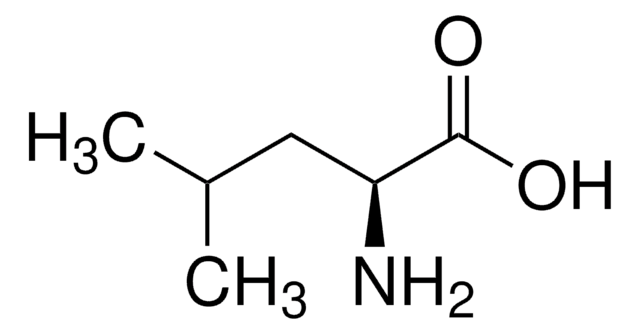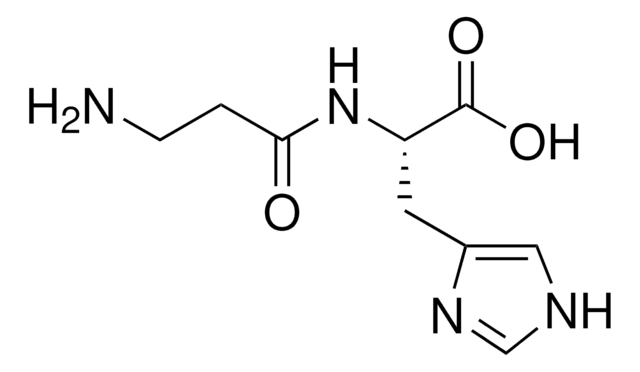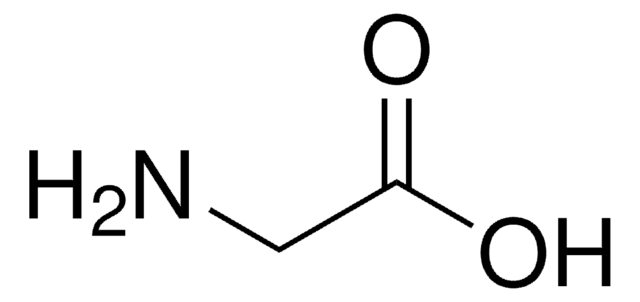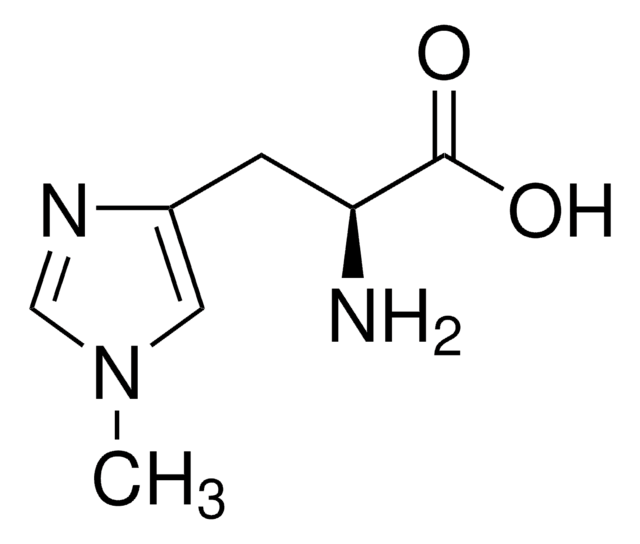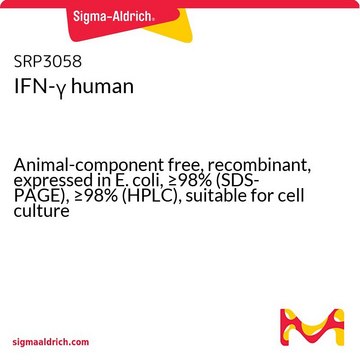推荐产品
生物来源
human
质量水平
重组
expressed in E. coli
方案
>97% (SDS-PAGE)
表单
lyophilized powder
效能
0.25-1.0 mg
分子量
~8.2 kDa
包装
pkg of 25 μg
储存条件
avoid repeated freeze/thaw cycles
技术
cell culture | mammalian: suitable
杂质
endotoxin, tested
UniProt登记号
储存温度
−20°C
基因信息
human ... CCL26(10344)
相关类别
一般描述
Eotaxin-3, also known as CCL26 or SCYA26, is a human CC chemokine and a functional ligand for CC chemokine receptor 3. This gene is localized to human chromosome 7q11.2, which codes for a protein of 71 amino acids. It belongs to the small inducible cytokine subfamily A , which also includes eotaxin and eotaxin-2.
生化/生理作用
Also known as CCL26 or SCYA26; a human CC chemokine and a functional ligand for CC chemokine receptor 3; mature recombinant human eotaxin-3 demonstrates chemotactic activity for eosinophils.
Eotaxin-3 is a potent attractant of eosinophils, and might be responsible for the accumulation of eosinophils in atopic diseases. As it is involved in the recruitment of eosinophils in inflammatory diseases, it, along with its receptor, might have potential as therapeutic target in inflammatory disorders, such as asthma. Demethylation results in increased expression of this gene, which in turn influences allergic reactions. This gene is overexpressed in bullous pemphigoid (BP), which results in the accumulation of eosinophils in skin lesions, thus, contributing to the pathogenesis of BP. Its expression is also elevated in the active lesions of patients with ulcerative colitis (UC) and Crohn′s disease (CD). Thus, it might play a role in the pathogenesis of UC, where its major source is colonic myofibroblasts.
Eotaxin-3, also known as CCL26 or SCYA26, is a human CC chemokine and a functional ligand for CC chemokine receptor 3. Mature recombinant human eotaxin-3 has a molecular mass of approximately 8.2 kDa and demonstrates chemotactic activity for eosinophils.
外形
Lyophilized from a 0.2 μm filtered solution in 30% acetonitrile and 0.1% trifluoroacetic acid containing 1.25 mg bovine serum albumin.
分析说明
The biological activity is measured by its ability to induce chemotaxis of rat Y3 cells stably expressing hCCR3.
警示用语:
Warning
危险声明
危险分类
Acute Tox. 4 Inhalation - Eye Irrit. 2
储存分类代码
11 - Combustible Solids
WGK
WGK 2
闪点(°F)
Not applicable
闪点(°C)
Not applicable
法规信息
新产品
Eunjin Lim et al.
Journal of immunology (Baltimore, Md. : 1950), 192(1), 466-474 (2013-12-11)
DNA demethylation has been primarily studied in the context of development biology, cell fate, and cancer, with less attention on inflammation. In this article, we investigate the association between DNA methylation and production of the chemoattractant cytokine eotaxin-3 in the
R F Guo et al.
Genomics, 58(3), 313-317 (1999-06-22)
By searching the Expressed Sequence Tag database, a full-length cDNA for a novel human CC chemokine was cloned. This cDNA encoded a 94-amino-acid protein with a putative signal peptide of 26 amino acids. The deduced mature protein had the four
C Günther et al.
Clinical and experimental immunology, 166(2), 145-153 (2011-10-12)
Eosinophils contribute to the pathogenesis of bullous pemphigoid (BP) by secretion of proinflammatory cytokines and proteases. Trafficking of eosinophils into tissue in animal models and asthma depends on interleukin-5 and a family of chemokines named eotaxins, comprising CCL11, CCL24 and
M Kitaura et al.
The Journal of biological chemistry, 274(39), 27975-27980 (1999-09-17)
Previously, we mapped the novel CC chemokine myeloid progenitor inhibitory factor 2 (MPIF-2)/eotaxin-2 to chromosome 7q11.23 (Nomiyama, H., Osborne, L. R., Imai, T., Kusuda, J., Miura, R., Tsui, L.-C., and Yoshie, O. (1998) Genomics 49, 339-340). Since chemokine genes tend
K Takahashi et al.
Clinical and experimental immunology, 173(2), 323-331 (2013-04-24)
Eotaxins induce the trafficking of eosinophils to the sites of inflammation via CC chemokine receptor 3 (CCR3). In this study, we investigated eotaxin-3/CC chemokine ligand 26 (CCL26) expression in the inflamed mucosa of patients with inflammatory bowel disease (IBD), and
我们的科学家团队拥有各种研究领域经验,包括生命科学、材料科学、化学合成、色谱、分析及许多其他领域.
联系技术服务部门